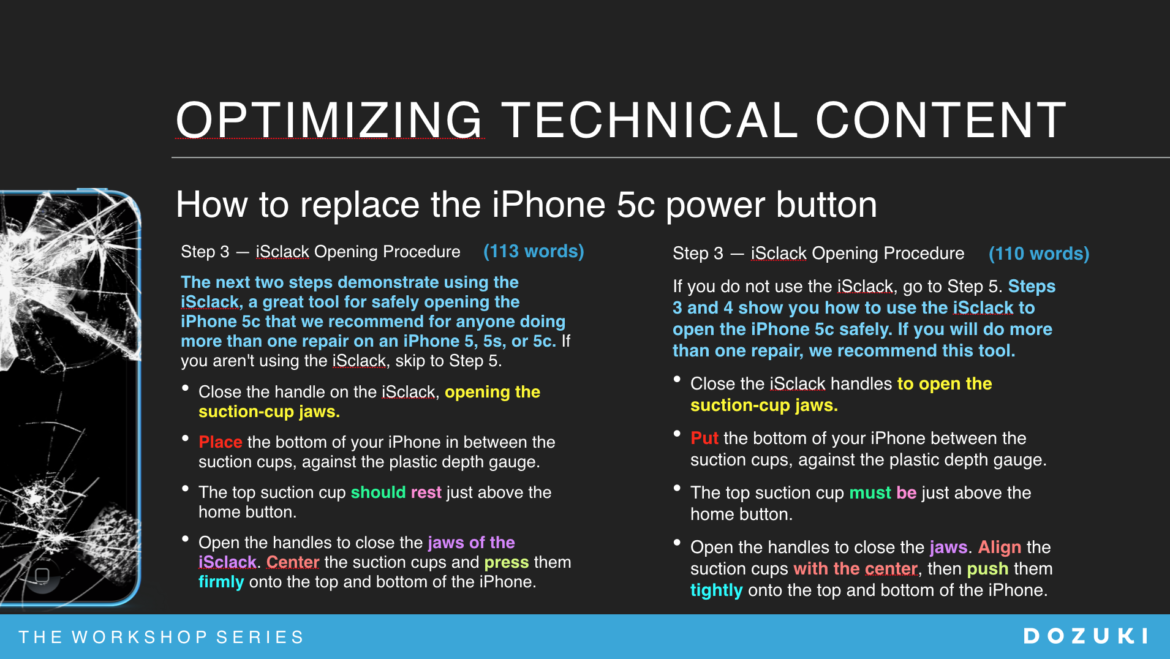Design your own Simplified Technical English writing and editing workshop in Holland
Amsterdam, 9 – 11 April 2018
Eindhoven, 4 – 6 June 2018
Utrecht, 10 – 12 December 2018
Length of training: 1, 2, or 3 days
Deadline: Registration ends two weeks before the commencement of every workshop
Cost per participant: From 395 EUR onwards
Summary
ASD-STE100 Simplified Technical English (STE) is a controlled language that is used to write technical manuals in such a way that they can be more easily understood by an international audience. Language standardisation helps us to achieve a number of benefits. We become more consistent on a word level that starts with the simple fact that we are going to use the same word whenever we refer to the same thing, so that means an improved level of consistency. The same happens to sentence structures or phrases.
Followed this course last February and truly learned a lot. Shumin is very experienced and really knows what she is talking / teaching about. Recommended for all manual writers!
– Hans Harlé, Entecst Technical Communication
Course outline*
Participants have the flexibility of attending a 1, 2, or 3-day training session with us.
- Day 1: Classroom Training
- Practical overview of ASD-STE100 Simplified Technical English
- How STE helps both native & non-native speakers of English
- Benefits of adopting the STE international writing standard
- Writing rules and how to apply them in practice
- How to use the general vocabulary.
- Day 2: Application, Review, & Exercises
- Approved and non-approved words discussion and the rationale behind.
- How to deal with industry-specific terminology
- How to use STE for various documentation types
- How to implement STE with minimal disruption to on-going production and existing documentation
- Day 3: Extended Writing Workshop
- Practical workshop session for applying STE rules to your own documents
- Review, edit, and discuss participants’ own documents to reinforce learning
- Classroom presentation of own documents.
* Shufrans also offers customised technical English training solutions tailored to meet your specific requirements. These courses are normally provided at the customer’s premises or at our offices in Singapore.

Who should attend?
- Compliance managers
- Communication managers
- Content specialists
- Content strategists
- Content quality analysts
- CIO, COO, CTO
- Customer support managers
- Documentation specialists
- Editors
- Engineering managers
- Engineers and SMEs who create documentation
- Field support engineers
- HSE managers
- ILS managers
- Information developers
- International process managers
- Operation managers
- Product managers
- Programme managers
- Project managers
- Quality assurance managers
- Safety inspection engineers
- Service & Maintenance managers
- Supply Chain Managers
- Technical administrators
- Technical documentation consultants
- Technical information managers
- Technical linguists
- Technical publications managers
- Technology services advisors
- Technical writers
- Translation managers
- Translators
What will I learn?
Ms. Shumin Chen will teach participants how to correctly and effectively use STE in practice. She will also address some of the mistakes commonly found in technical writing and the frequently incorrect use of common STE writing rules.
Our interactive training, exercises and workshop, will teach participants to standardise content to:
- Author more efficiently
- Communicate more effectively with a global audience
- Improve operational safety and reliability
- Reduce AOG / downtime
- Facilitate machine and human translation
- Facilitate modular writing and reuse
- Facilitate teamwork
- Maximise consistency
- Optimise product lifecycle support
- Reduce the cost of creating and maintaining technical publications
Trainer’s qualifications
Ms. Shumin Chen, principal trainer & consultant at Shufrans TechDocs received her professional on-the-job training in the field of STE under the tutelage of Dr Frans Wijma, a linguist and documentation expert. Together as an experienced global team, they provided their combined knowledge and dedication to benefit customers worldwide. To date, they have provided training and consultancy services to over 180 companies. Shufrans TechDocs is the only company with such vast experience in providing certified STE training.
Shumin has supported various companies with their STE and other documentation needs, based on standards where possible. Although STE was developed for the aerospace industry, more specifically for aircraft maintenance documentation, Shumin found that it made a lot of sense to apply the same principles to other industries and types of documents as well. Few -if any- changes to the specification are necessary to adapt STE to industries ranging from machinery to IT, automotive to medical equipment.







